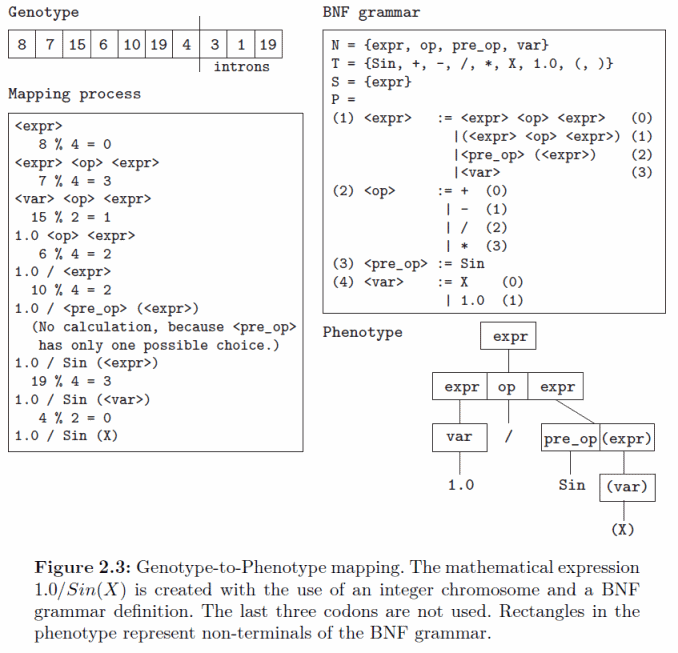Grammatical Evolution in HeuristicLab
The latest version of HeuristicLab now also includes a plugin for grammatical evolution (GE)! The plugin has been implemented by Sabine Winkler for her Bachelor's thesis, and she kindly contributed her implementation to HeuristicLab, so that we could integrate it into the stable development branch.
So far, the implementation supports two problems: symbolic regression and the artifical ant problem for the Santa Fe trail. However, additional problem types for grammatical evolution can be added easily in a similar way as for tree-based GP (see our documentation on implementing GP problems)
The implementation of GE reuses existing classes and methods for tree-based GP and acts mainly as a translator between the integer vector encoding and the tree encoding. In the mapping process the grammar is used to build a tree from the integer vector. The concept of the mapping process is shown in the following diagram:
The GE plugin also provides different multiple variants of mappers that have been described in literature including depth-first, breath-first, and the π-GE mappers. In GE the genotype to phenotype mappers use a grammar to create a tree from an integer vector. The elements of the integer vector are read from left to right and the tree is built starting from the root symbol of the grammar. For each non-terminal symbol the mapper reads one element from the vector and chooses the alternative for extending the tree based on this value. An example for the depth-first mapper is shown in the following figure.
In GE the genotype to phenotype mapping is prone to the so-called ripple-effect which describes the phenomenon that a small change of the integer-vector might lead to a completely different tree after mapping. This hampers the search process and could lead to premature convergence of the algorithm.
We are happy about contributions to the grammatical evolution implementation or to HeuristicLab in general. So, if you have implemented an algorithm or problem or even only a custom operator feel free to contribute!
Figures (C) Sabine Winkler, with kind permission.

 rss
rss

